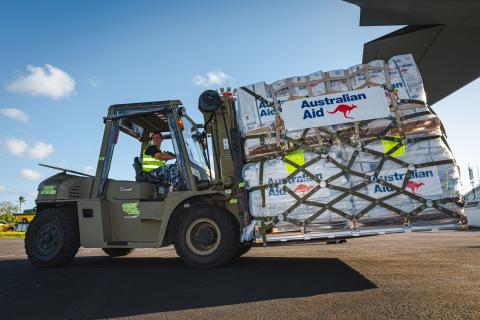Minerals produced in Southeast Asia play an important role in global supply and local manufacturing and infrastructure. The region is a large-scale producer of minerals required for the global energy transition, including nickel, copper and tin, and has high potential to produce more.
However, environmental and social impacts from mining and processing cause concerns among local communities and customers alike. Such disquiet, together with uncertainties around mining laws, have translated into a decline of exploration and mining investment in Southeast Asia.
That leaves the region well short of its mineral production potential, under-performing in its much-needed role in critical minerals supply chains, and as an importer of many minerals required for manufacturing and development.
Seeking to increase minerals investment, ASEAN mining ministers adopted a revised ASEAN Minerals Cooperation Action Plan for 2021 to 2025 (AMCAP-III) in October 2021. The objective is to “create a vibrant and competitive ASEAN minerals sector for the well-being of ASEAN peoples”.
AMCAP-III sets out how the ten ASEAN nations will work together to build sustainable minerals development, promotion of minerals investment, and human and institutional capacities. AMCAP-III was implemented in recognition of the foundational role of minerals of all kinds in ASEAN economies and sustainable development, and in stimulating and enhancing business and trade integration in ASEAN.
AMCAP-III, and the design of a new minerals information system, was developed with Australian funding and advice under the now-concluded ASEAN-Australia Development Cooperation Program. A new program, Australia ASEAN Futures Initiative (Aus4ASEAN Futures) was launched in mid 2022, with the first sub-program being “Economic and Connectivity (ECON)”. Details of whether and how Australia will support sustainable minerals development in ASEAN in future have yet to emerge from ECON.
Australian companies collectively make Australia the largest investor in mineral exploration in Southeast Asia and the Pacific. In 2022, ASX-listed companies spent about US$100 million exploring for minerals there, or 28 per cent of all exploration investment in the region. In Southeast Asia alone, Australian companies have identified US$220 billion worth of mineral reserves and invested capital of US$2.6 billion in mining, according to analysis using the S&P Global mining database.
Australia’s economic interests in the ASEAN region were emphasised by Nicholas Moore in his recent Southeast Asia Economic Strategy report to the Australian government. Moore highlighted the regional market openings for Australian-produced minerals and mining equipment and services, as well as investment opportunities for Australian minerals companies. Moore’s report also identified capacity-building needs of several ASEAN nations to produce minerals sustainably and recommended government-to-government cooperation initiatives.
Richard Moore points out, however, that Australia’s International Development Policy, released in August 2023, provides little discussion of the importance of economic growth and how international development can facilitate it. Nicholas Moore’s economic strategy report makes a raft of recommendations for economically focused development cooperation across ASEAN and in several ASEAN nations.
In addition to its longstanding ASEAN development initiatives, Australia is implementing economic development cooperation commitments with Indonesia and other Southeast Asian nations under two trade and investment agreements. Both the Indonesia-Australia Comprehensive Economic Partnership Agreement (IA-CEPA) and Regional Comprehensive Economic Partnership (RCEP) contain whole chapters on “economic cooperation” to help build capacity for trade and investment.
The burgeoning number of regional and global agreements on critical minerals concluded in the past 18 months commit Australia to work with other nations to build networks of secure and sustainable supply chains. The agreements implicitly recognise that some supplier nations need assistance to join these new supply chains. Several ASEAN nations are among them.
It remains to be seen how Australia responds to its commitments under these agreements, beyond a just-signed MoU with Indonesia for collaboration on the “electric vehicle ecosystem”.
Certainly, Australia has substantial minerals investment in Southeast Asia, and strong minerals and mining equipment, technology and services trade with Southeast Asian nations. Australia has delivered minerals development cooperation programs in Southeast Asia for more than a decade. These relationships make a compelling business case for ongoing engagement in building sustainable minerals supply chains within, to and from the region.
Canada, Germany, Japan, Korea, the United States and China are already helping ASEAN and its member states with implementation of the minerals action plan and information system, and in building critical minerals supply chains. Australia should join them, bringing to bear its acknowledged regional leadership in minerals technology, skills and governance.
Disclaimer: The author led a team from The University of Queensland between 2020 and 2022 that worked with the ASEAN Secretariat and the ten member states to review minerals policies and performance, make recommendations for design of the new AMCAP and scope the new ASEAN Minerals Information System.

